The desert may be a place that brings to mind images of towering dunes and hard scorched earth, but did you know that the desert is also home to lush and exotic desert fruits?
In fact, some of these plants even produce their own edible fruit.
With this delicious produce, you can replicate dishes made more than a thousand years ago, when humans still searched the wastes for food and supplies.
However, it is important that you understand exactly what you are searching for.
While desert fruits are not unknown, they can be hard to find in commercial supermarkets, which can make it difficult to discern the countless varieties.
So if you want to learn more about these fruits, then you have come to the right place.
In the following article, we have compiled a list of some of the best desert fruits in the world, so that you can learn more about the different types and their uses.
We have also included some interesting information about each fruit and its habits.
So if you want to read more about these exotic fruits, this article has everything you need to get started…
1. Prickly Pear (Opuntia Genus)
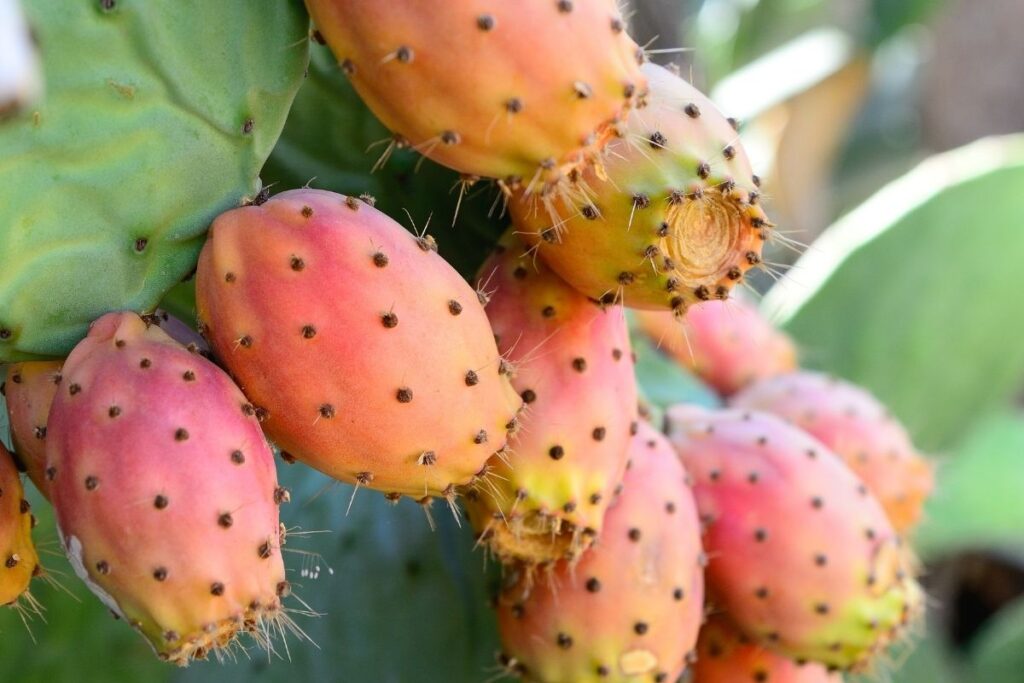
For the first fruit on our list, we have chosen the prickly pear – a species of flowering plant that belongs to the cactus family.
Native to the deserts of North and South America, this vibrant pink fruit is known for its sweet taste and is commonly used in ice cream and margaritas.
Known as screw bean mesquite, these green-yellow pods can be found in the deserts of the southwestern United States and northern Mexico.
2. Mesquite (Prosopis Pubescens)
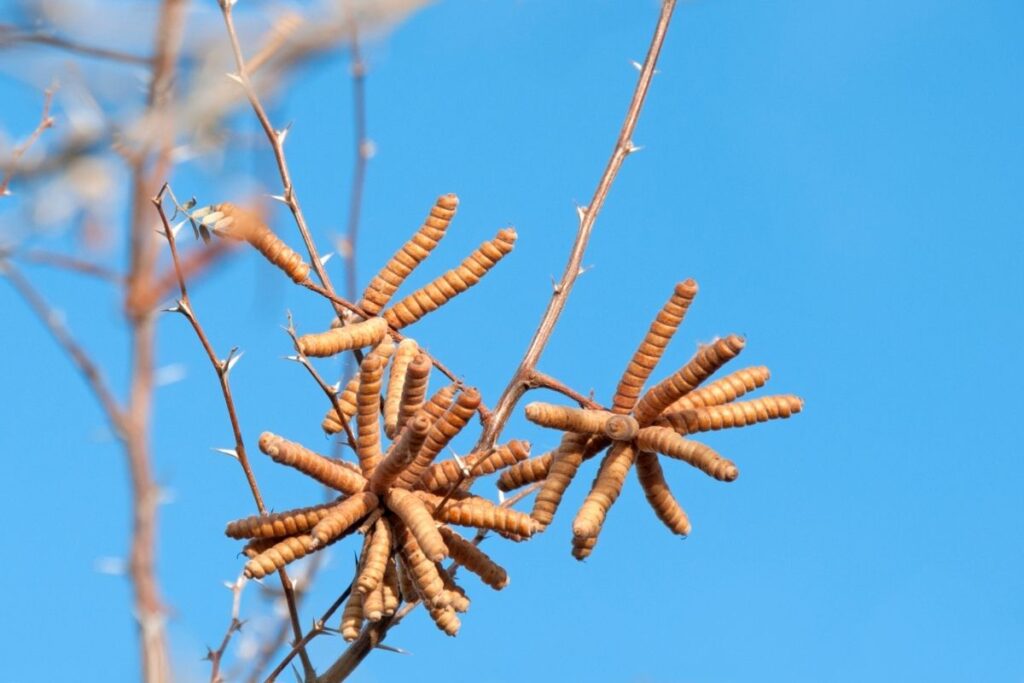
Mesquite is said to have a strong and aromatic taste similar to gingerbread, with the pods commonly being used to make a coarse meal for tortillas and cookies.
3. Jojoba (Simmondsia Chinensis)

Jojoba is an endemic species to the North American continent, where it is commonly cultivated for cosmetic products and skincare.
However, the small brown nuts are also edible and are said to have a bitter flavor similar to almond or cashew.
This tree-like cactus can be found in the deserts of Arizona, where it is a protected species and therefore untouchable.
4. Saguaro (Carnegiea Gigantea)

This tree-like cactus can be found in the deserts of Arizona, where it is a protected species and therefore untouchable.
However, this does not mean that the fruit is unobtainable, as it is known for its sweet strawberry taste and is commonly used to make cocktails and preserves.
5. Desert Ironwood (Olneya Tesota)
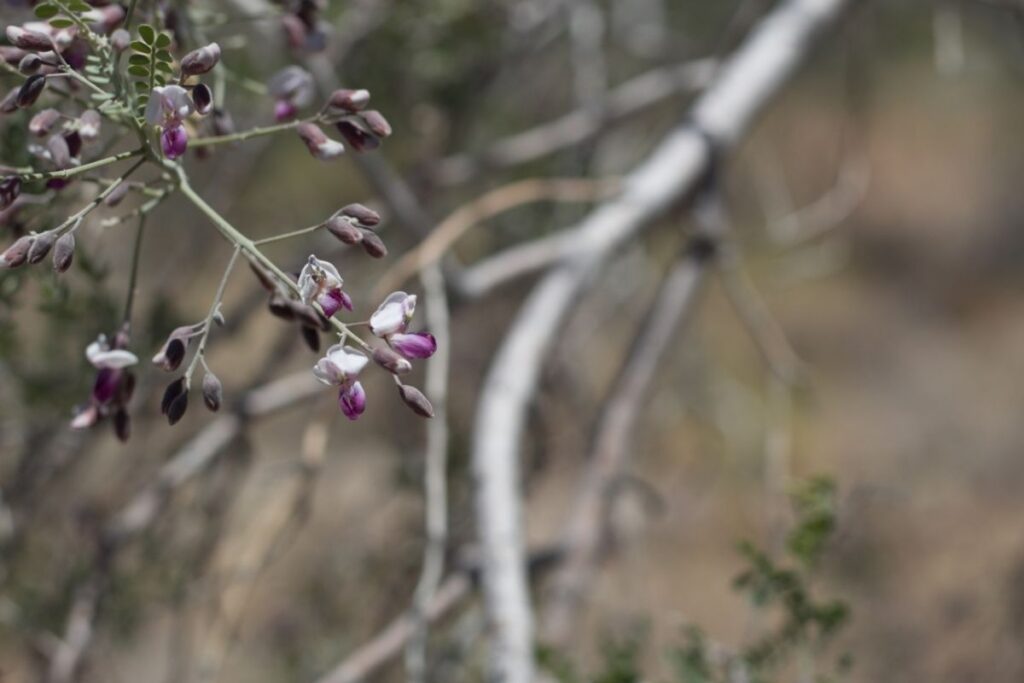
While members of the ironwood genus can be found in deserts across the world, we have decided to showcase a native species found in Arizona.
Like the mesquite tree, this species of ironwood is known to produce small brown nuts, which can only be harvested for two weeks out of the year.
6. Wolfberry (Lycium Barbarum)
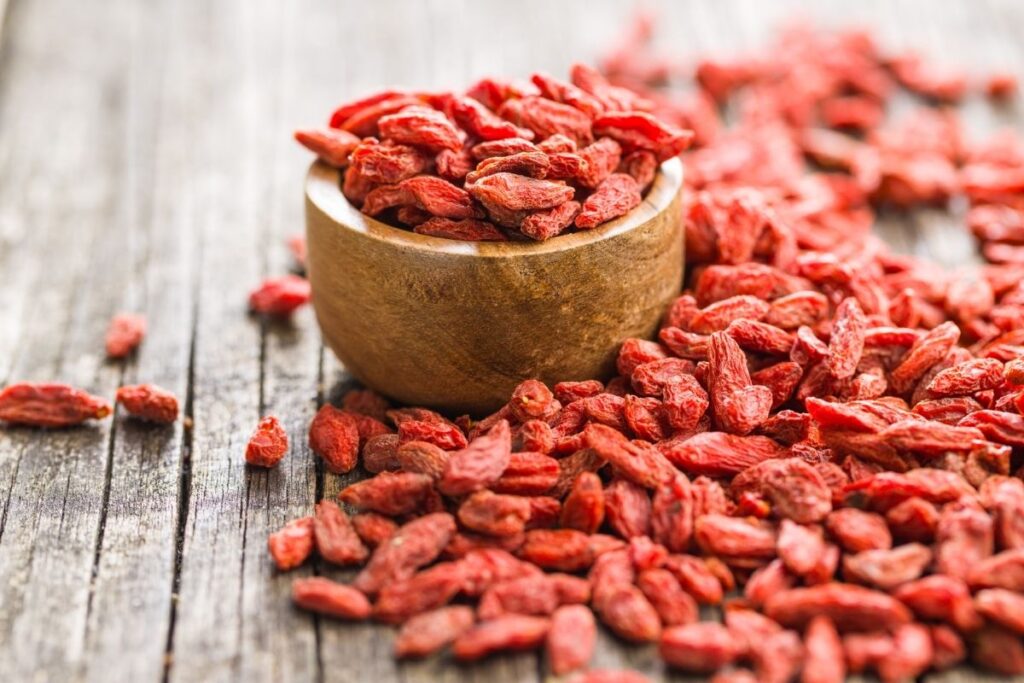
Originating in eastern Asia, this fruit has since been cultivated in the deserts of the southwestern United States, where it is known for its small size and crimson skin.
A proud member of the goji family, this berry is said to be bursting with antioxidants and can be identified by its distinctive and sour taste.
7. Agave (Agave Americana)
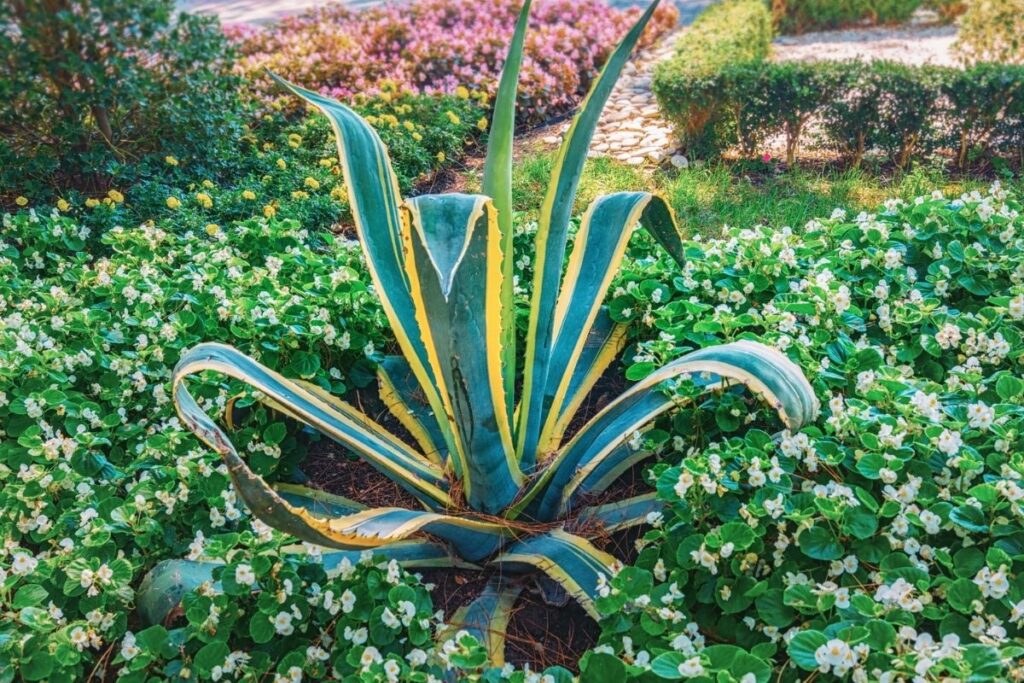
This desert plant can be found in the hot and arid regions of the Americas, although some species are also endemic to the tropics of South America.
While not a fruit in the traditional sense, agave leaves can be harvested for their sweet syrup, which is said to taste similar to fresh pineapple.
8. Buckhorn Cholla (Cylindropuntia Acanthocarpa)
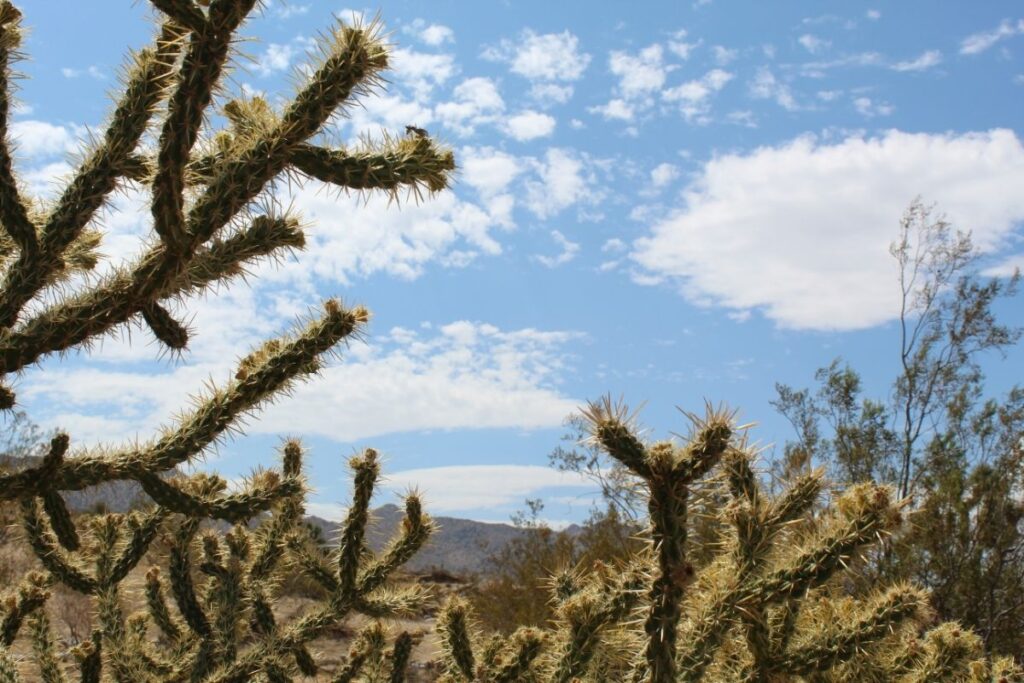
Native to the deserts of North America, this cholla cactus is known for its spiked tendrils and blooming buds, which can be made into a delicious snack.
Characterized by their soft and gummy nature, the buds are said to have a similar taste to okra and can stay preserved for years once they have been dehydrated.
9. Palo Verde Seeds (Parkinsonia Florida)
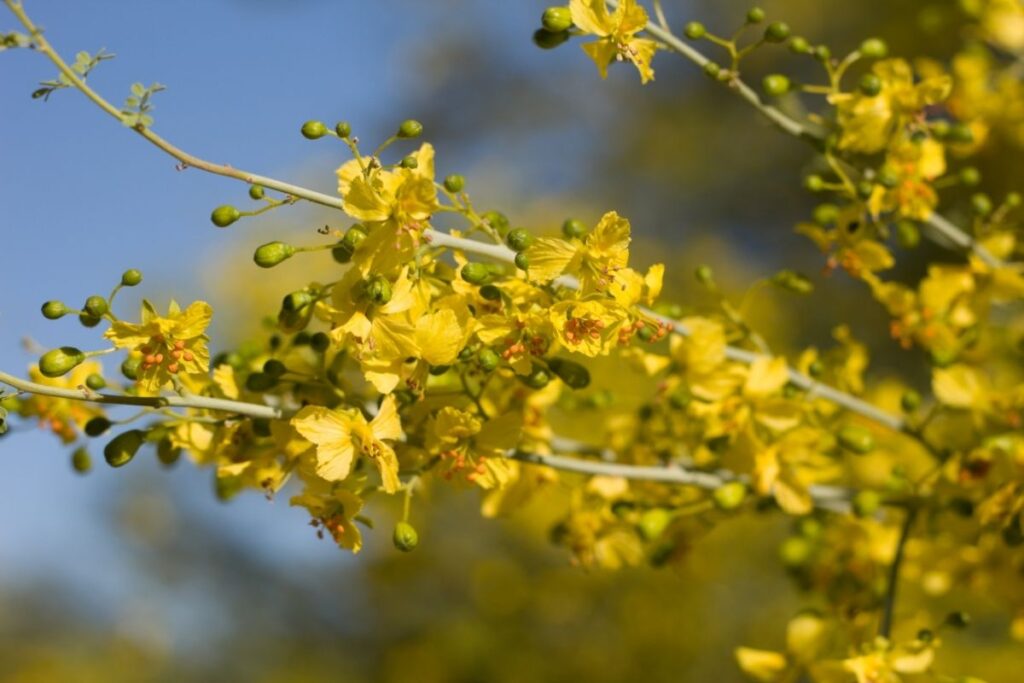
While the yellow flowers of the Palo Verde tree can prove troublesome for people with allergies, the pods that dangle from its branches are said to be quite delicious.
Best eaten after a monsoon, these small brown seeds have a similar taste to sugar snap peas and can be used in countless savory dishes.
10. Nara Butter-Nuts (Acanthosicyos Horridus)
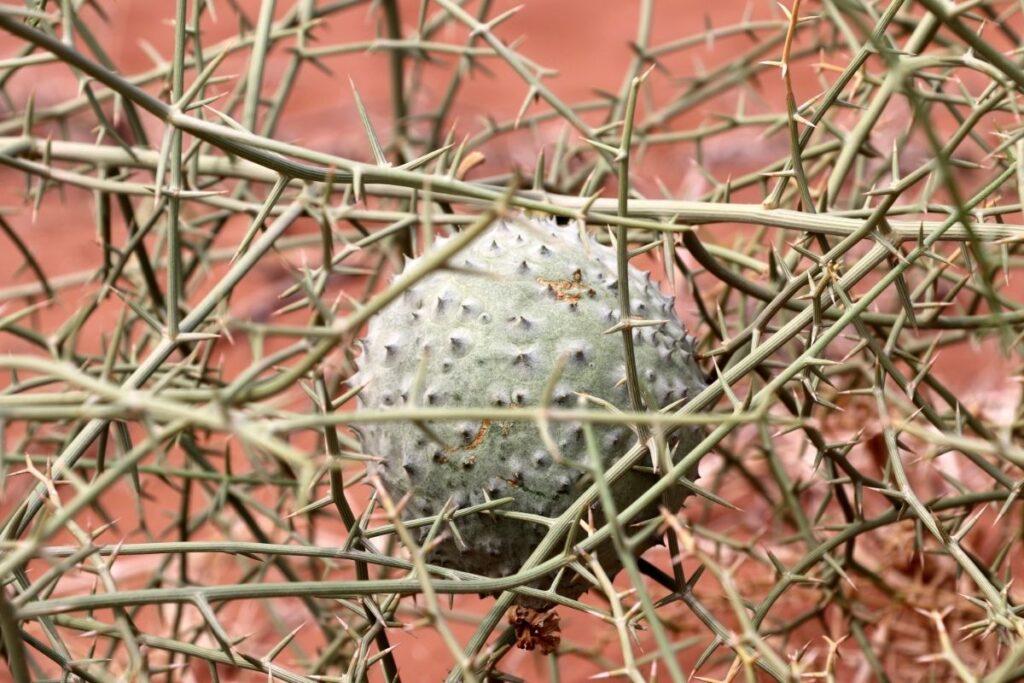
Butter-nuts are large melon-like fruits endemic to the Namib desert, where they are used as a food source for the Nama people.
The fruit can be identified by its orange pulp and pale green skin, which can be eaten raw or cooked into baked goods.
11. Hanza Fruit (Boscia Senegalensis)

Originating from Africa, this pale green fruit remains a traditional food source for the local people and has the potential to improve nutrition and sustainable land care.
Because of its sweet taste, the pulp of the fruit is commonly used to make cookies and other confections, with the fruit also bursting with vitamins and nutrients.
12. Desert Lime (Citrus Glauca)
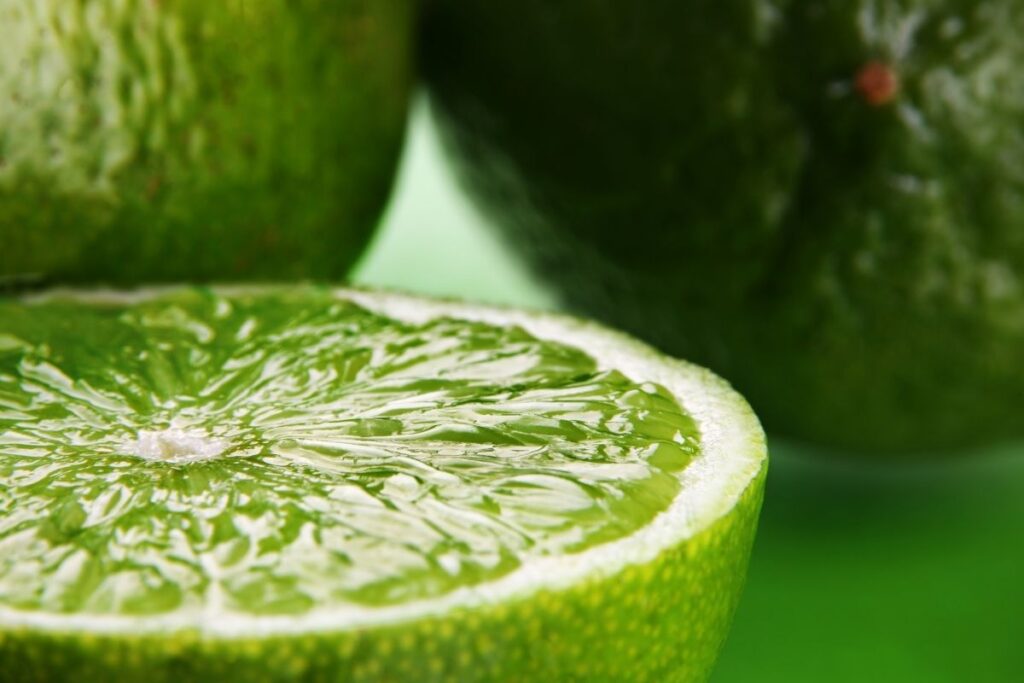
This thorny shrub is a native species found in the deserts of South Australia, where it produces a small green fruit and prized bush food.
Nowadays, the desert lime is used to make a range of products from marmalade to beverages, with the fruit being known for its strong citrus taste.
13. Date Palm (Phoenix Dactylifera)
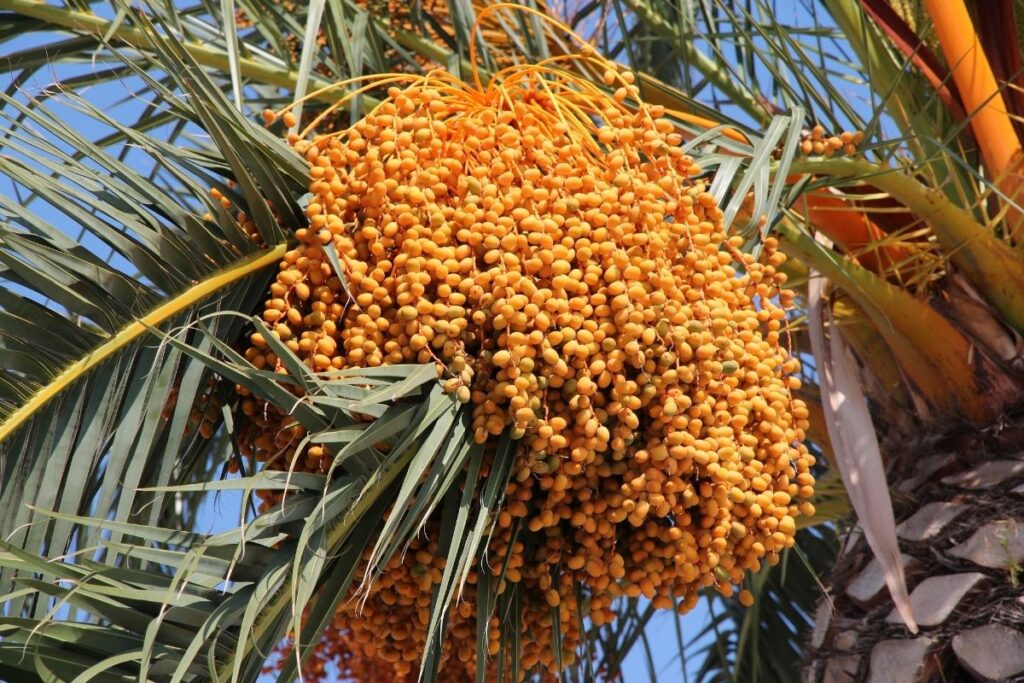
The date palm is a flowering palm tree that can be found in the deserts of the Middle East, where it is cultivated for its small brown fruits.
While dates are known to be delicious on their own, they can also be pitted and stuffed with marzipan, which helps to enhance their natural sweetness.
14. Rock Fig (Ficus Platypoda)
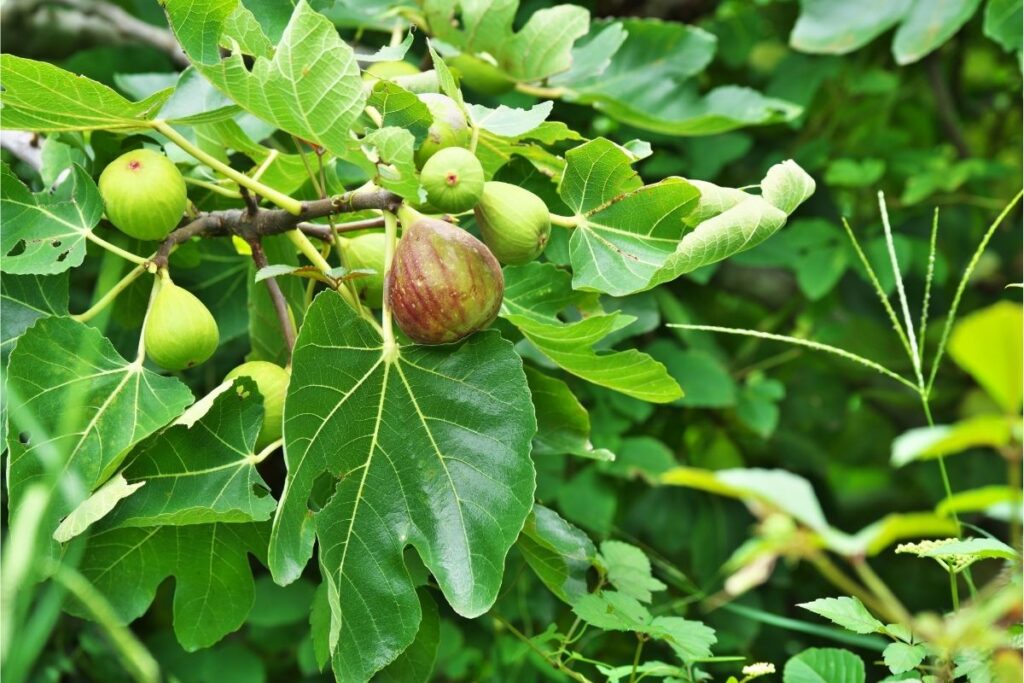
Desert figs can be found throughout northern Australia, where they will commonly grow on mountains or rocky outcrops.
Unlike common figs, the fruit is said to be oval in shape and can be eaten when it has ripened to a shade of yellow, pink, or purple.
15. Doum Palm Fruit (Hyphaene Thebaica)
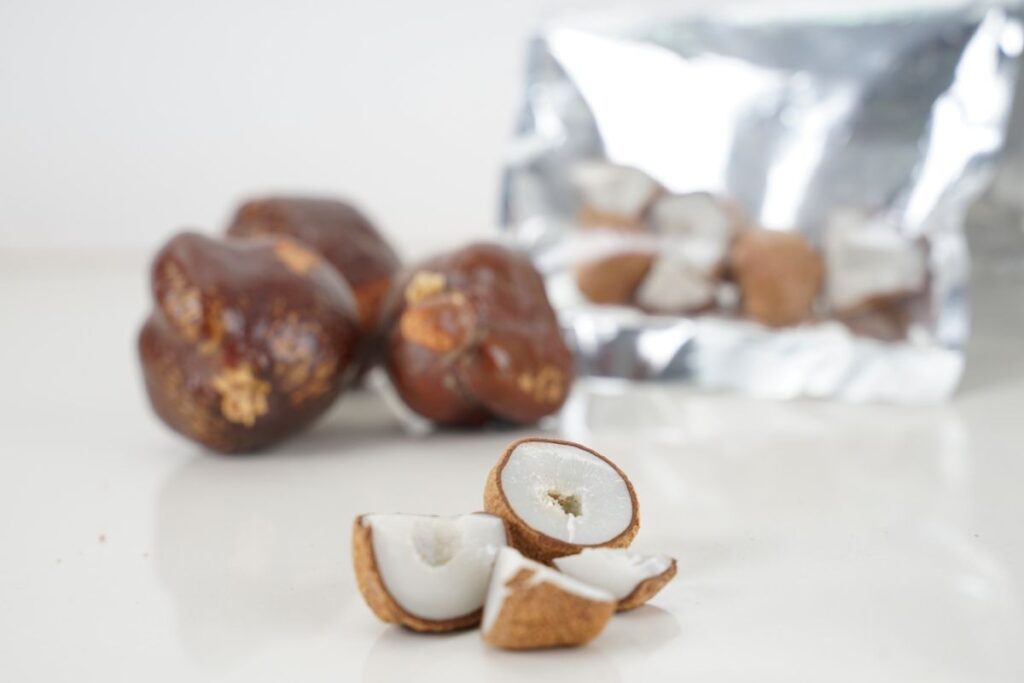
Known as the gingerbread tree, this species of palm is native to the Arabian Peninsula, where it thrives in deserts with present groundwater.
While the species is commonly cultivated for its ornamental beauty, it also produces an edible fruit that can be eaten raw or made into cakes and molasses.
16. Strawberry Cactus (Mammillaria Dioica)
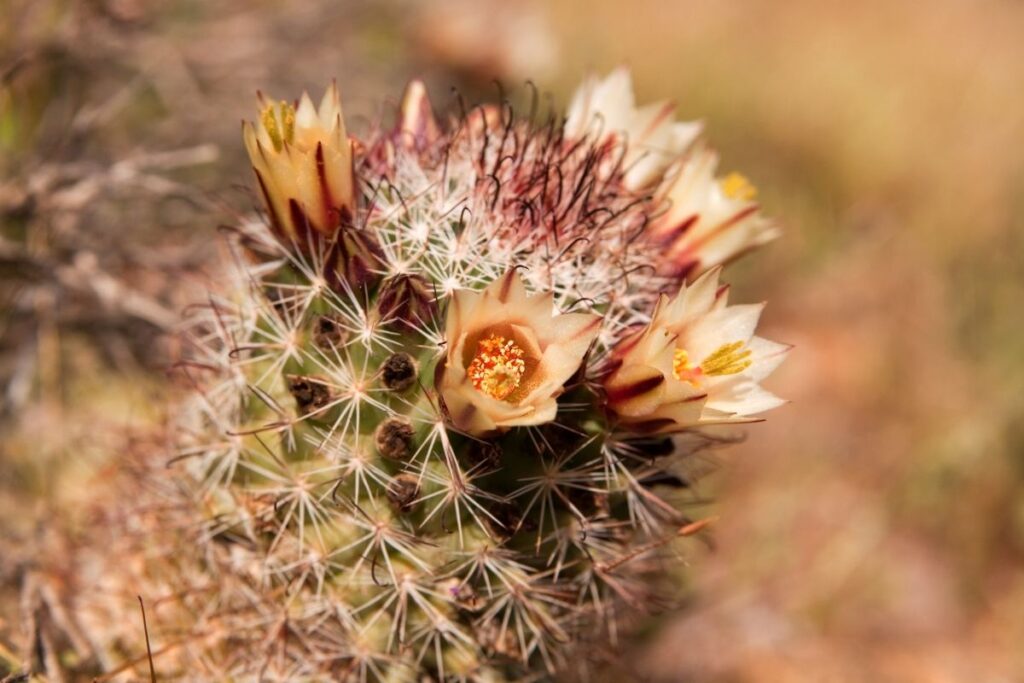
Native to Southern California, this species of cactus is known to thrive in desert conditions, where it produces white flowers and bright red fruit.
The fruit of the cactus is commonly ovoid in shape and tastes like a cross between a strawberry and a kiwi.
17. Dragon Fruit (Selenicereus Undatus)
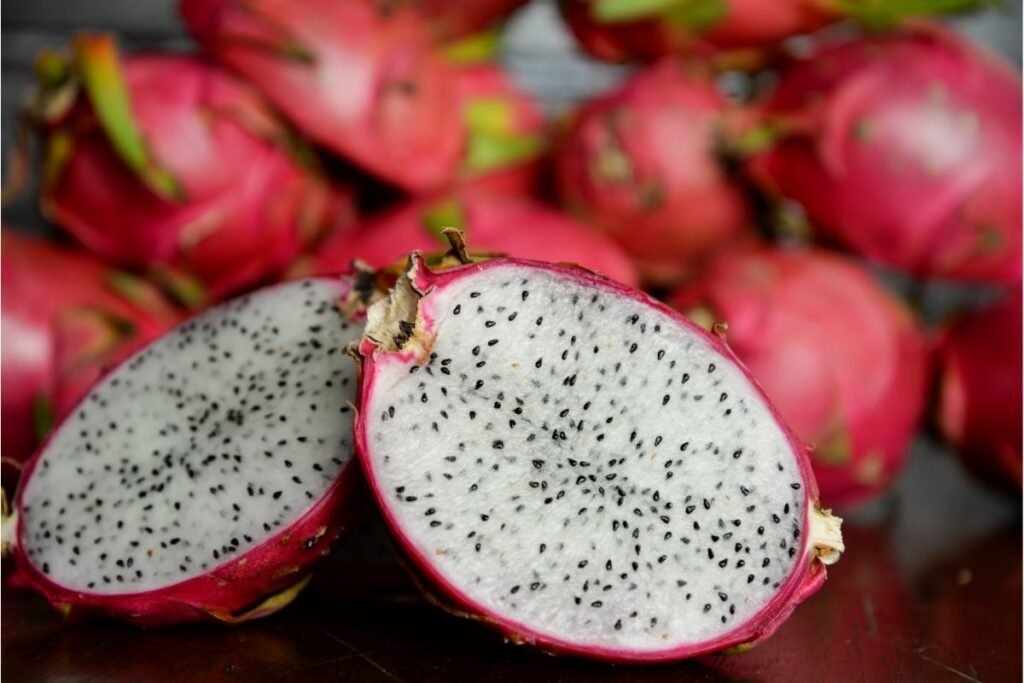
Dragon fruit (otherwise known as pitahaya) is a tropical fruit produced by several species of cactus, with the native origin of the genus remaining unknown.
18. Natal Orange (Strychnos Spinosa)
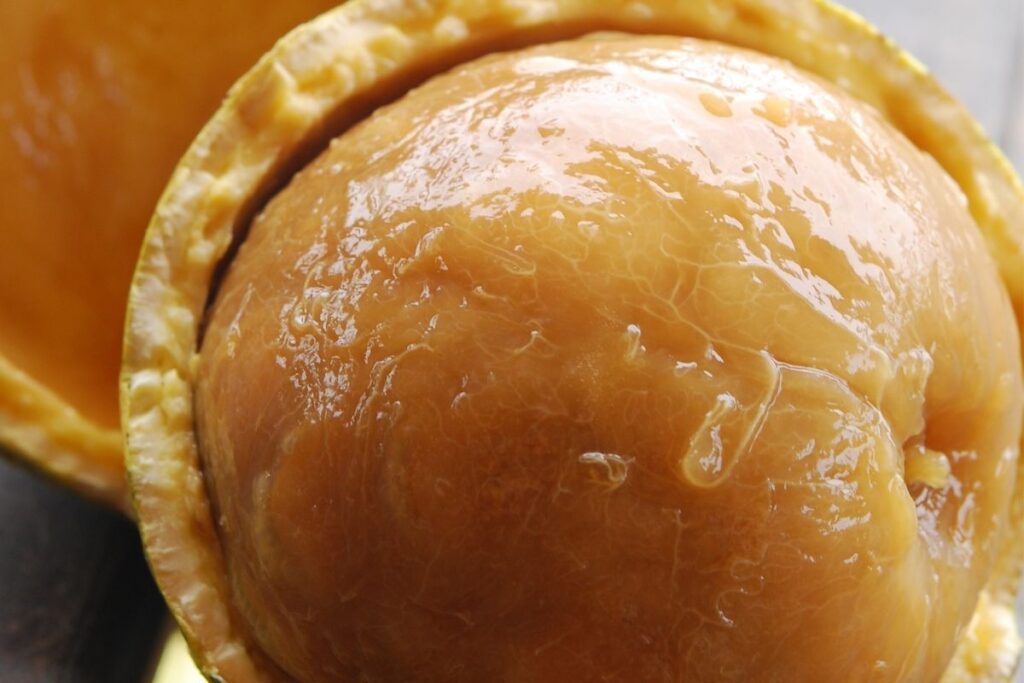
The Spinosa tree can be found across tropical and subtropical Africa, where it is known to yield a round yellow fruit with a sweet-sour taste.
While the natal orange is edible, the fruit does contain large toxic seeds that need to be carefully removed.
However, the tree itself is primarily cultivated for its medicinal properties, which can be used to treat snakebites and venereal diseases.
19. Indian Plum (Ziziphus Mauritiana)
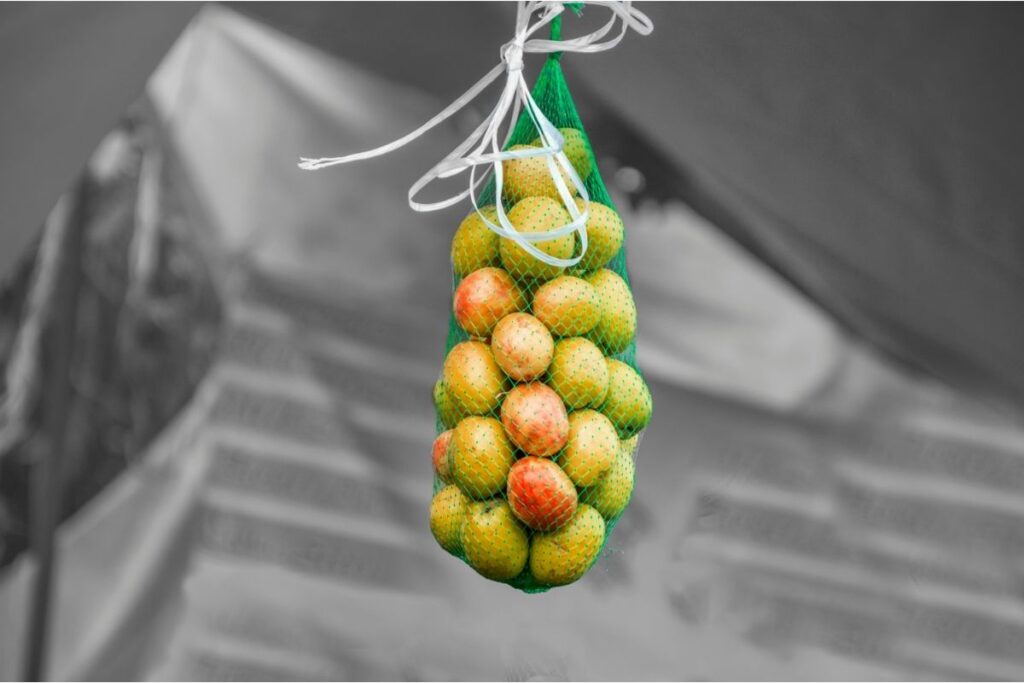
While this tropical fruit is closely related to the Chinese jujube, it is now commonly cultivated in the deserts of South Asia, where it is eaten raw or pickled.
On the surface, this fruit can look very similar to a green apple, although it is far more nutritious and bursting with vitamin C.
20. Horned Cucumber (Cucumis Metuliferus)
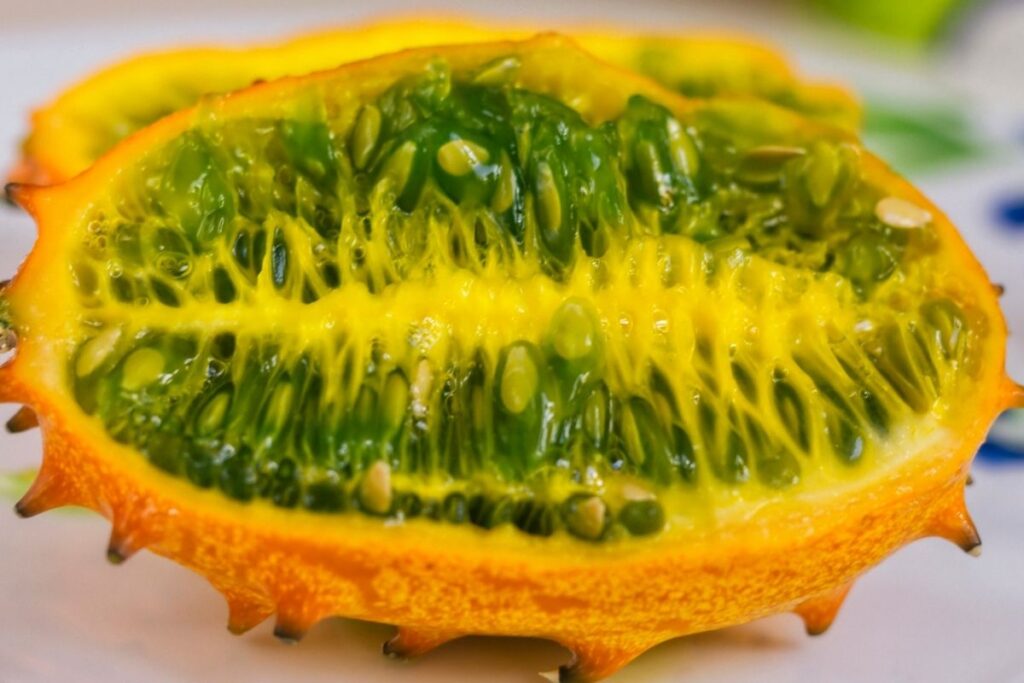
Despite its name, the horned cucumber is produced by an annual vine that belongs to the melon family, with the species commonly being found in Southern Africa.
The fruit can be identified by its bright orange skin and lime green flesh, which is said to taste like a cross between passion fruit and a banana.
21. Namib Tsamma (Citrullus Ecirrhosus)

Namib tsamma is a perennial desert vine that can only be found in South Africa, where it is known to grow in the Namib Desert.
A proud member of the gourd family, this vine will produce a large melon-like fruit during maturity, which shares the same white flesh and bitter taste as its closest relative – the citron melon.
22. Bush Banana (Marsdenia Australis)
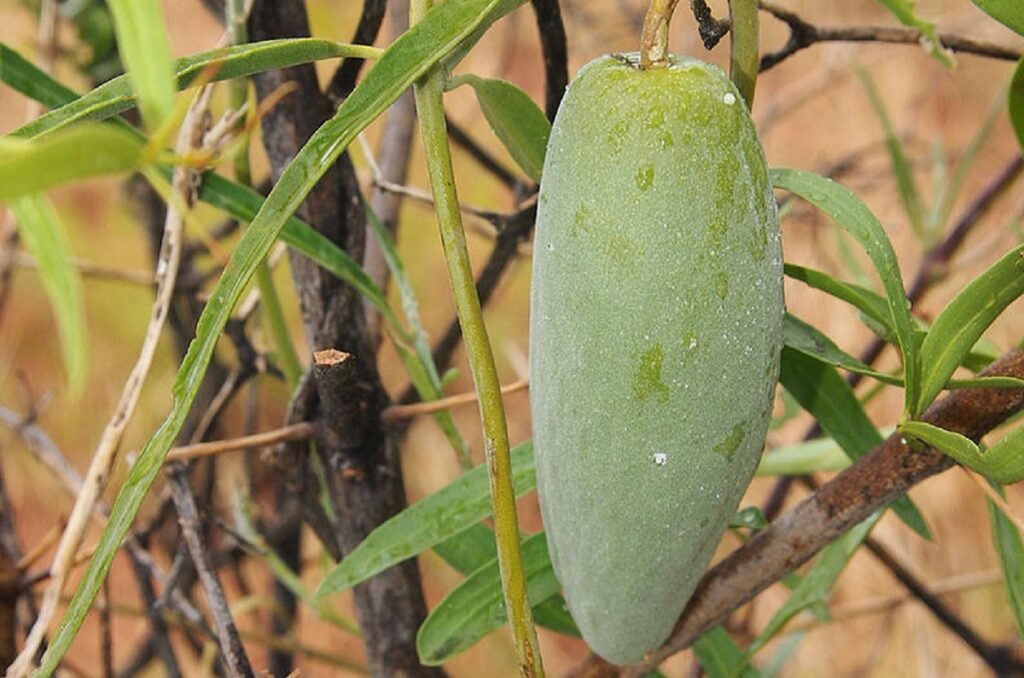
As the name implies, this fruit is a native species to the Australian outback, where it is still consumed by indigenous communities.
The bush banana is notable for its distinctive shape and lush green skin, with the fruit commonly being baked in the hot earth before it is eaten.
23. Wild Almond (Prunus Fasciculata)

Native to the deserts of Arizona, California, Nevada, and Utah – this spiny shrub is known for producing wild almonds, which were once considered a delicacy by the Native Americans.
While the seed is known to contain traces of cyanide, the nut itself is edible and can be identified by its green skin and white fur.
24. Evergreen Cherry (Prunus Ilicifolia)
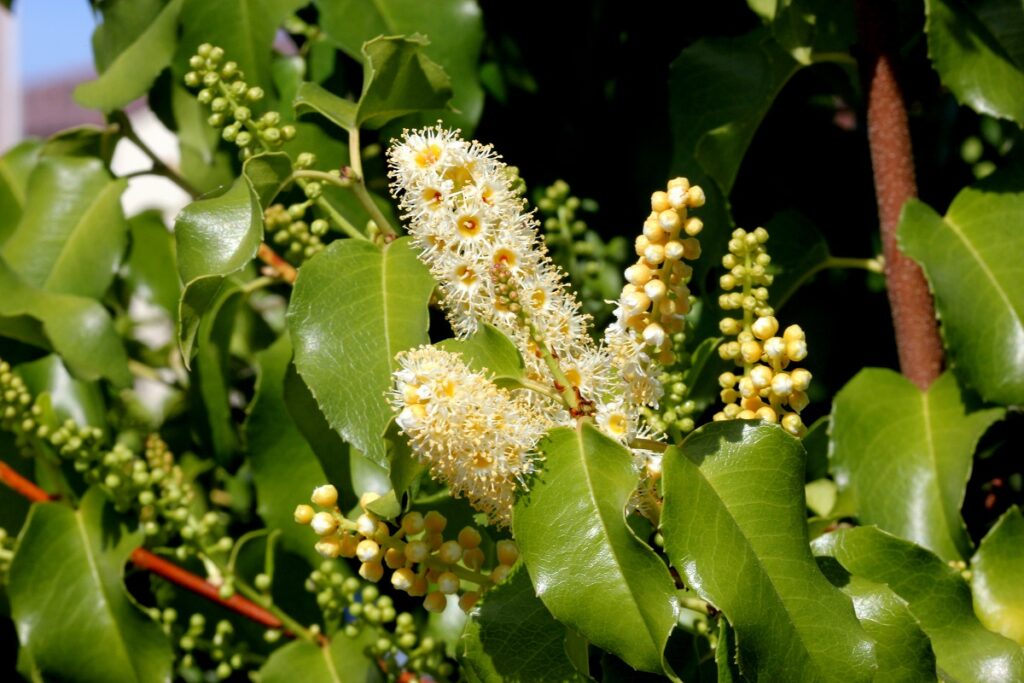
Despite its common name, this fruit does not belong to the cherry family and can be found among the deserts of coastal California.
The cherries can be identified by their crimson skin and were once fermented by the Native Americans to make an intoxicating drink.
Conclusion
As you can see, there are countless fruits that grow in the desert, with our list only showcasing a select few.
So now that you know more about these delicious offerings, which one do you think you will try first?







